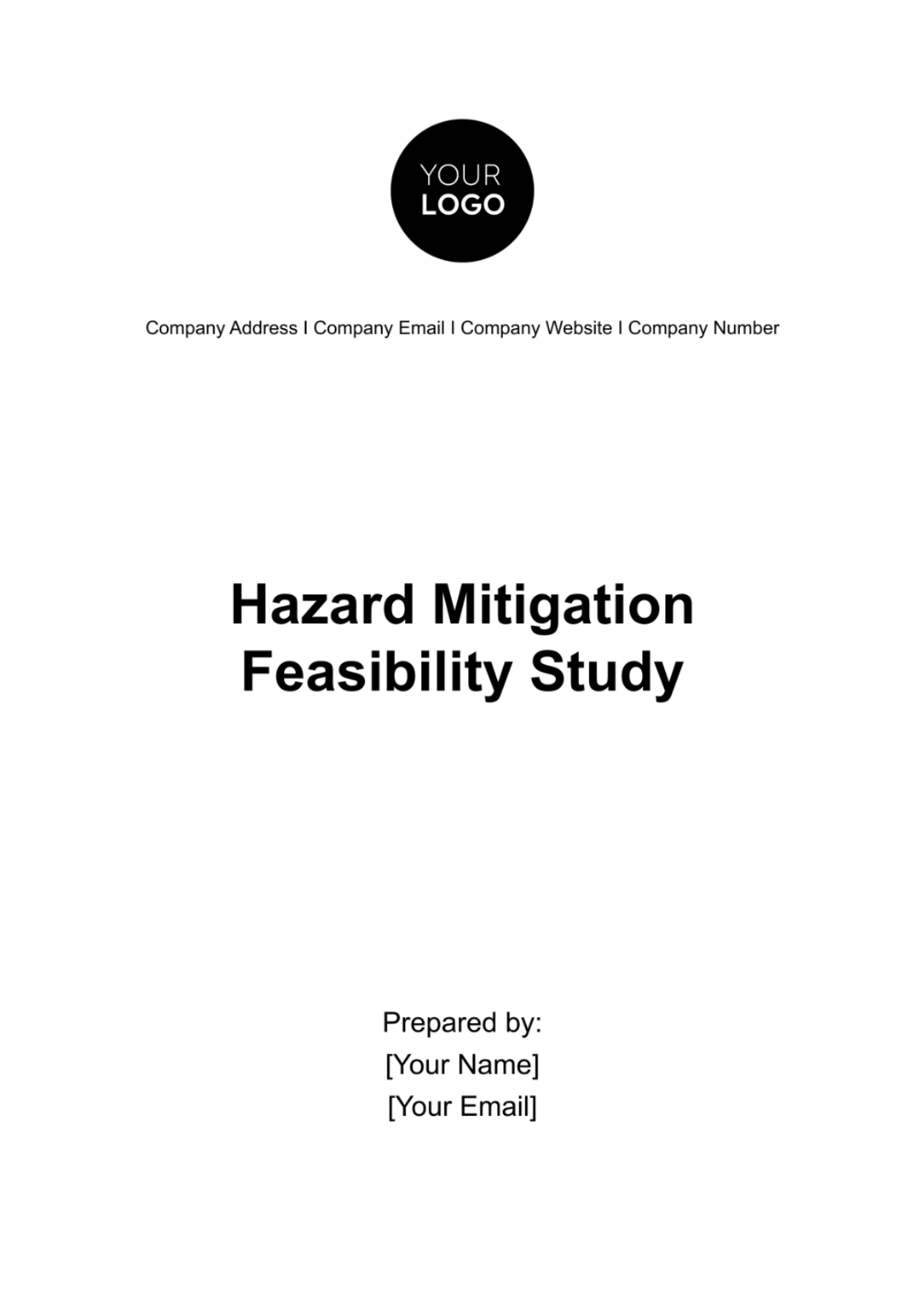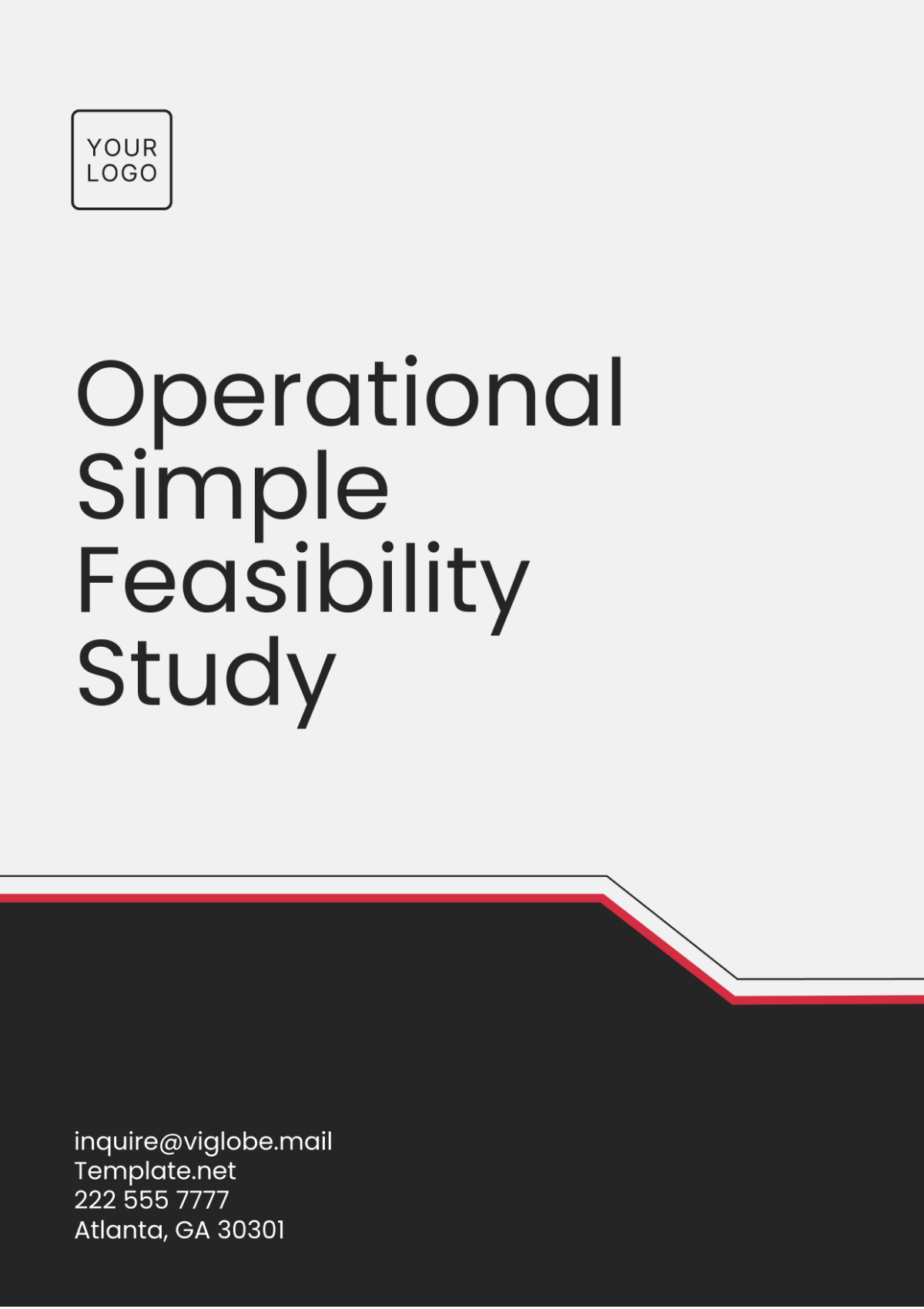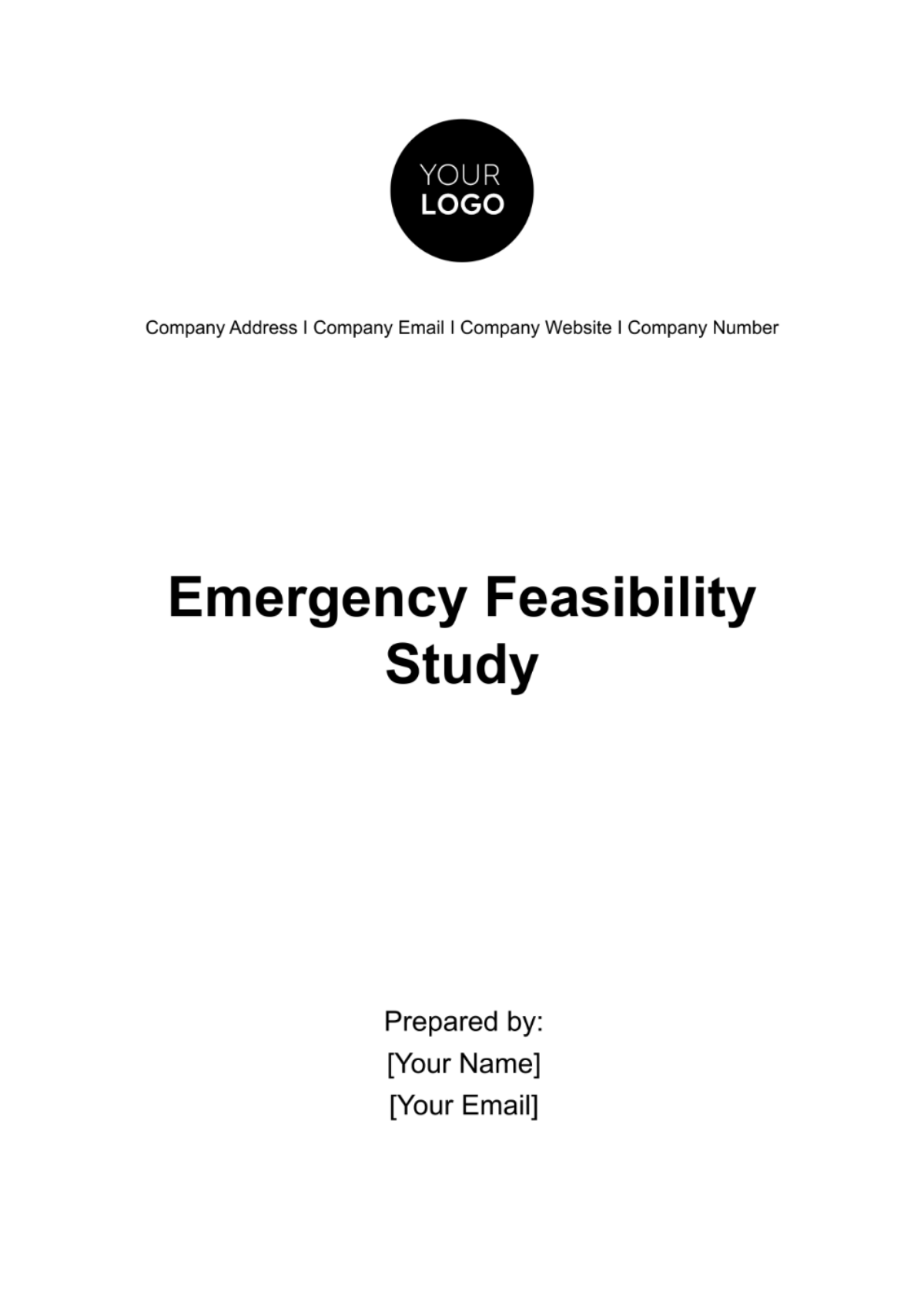1. Executive Summary
The primary objective of this study is to determine the viability of implementing a robust and efficient emergency response plan tailored to the specific needs of our organization.
To achieve this goal, the study rigorously examines a range of potential emergency scenarios that could impact our operations. These scenarios encompass various events, such as fire emergencies, natural disasters like earthquakes, and other critical incidents. Each scenario is assessed in terms of its likelihood of occurrence and the potential consequences it may entail.
Furthermore, the study delves into a comprehensive risk assessment, prioritizing the identified risks based on their severity and potential impact. This analysis forms the basis for crafting a response plan that is tailored to address the most critical and probable emergency situations. The plan defines clear roles and responsibilities, communication protocols, and evacuation procedures to ensure a well-coordinated response.
Crucially, the study also estimates the financial requirements for implementing and maintaining the response plan. It considers costs associated with training, acquiring necessary equipment, and ongoing maintenance.
In parallel, the potential benefits of the emergency response plan are analyzed, encompassing factors like lives saved, property protection, and business continuity.
This Executive Summary underscores the importance of the Emergency Feasibility Study in enhancing the safety and resilience of our organization. The subsequent sections of the study provide in-depth insights into each aspect of the assessment, offering valuable information to guide informed decision-making.
2. Introduction
This study is conducted to ensure the safety and preparedness of our organization in the face of potential emergencies. The goal is to evaluate the feasibility of implementing a robust emergency response plan to protect lives and assets.
3. Scope of the Study
The scope of this study is integral to its purpose and outlines the boundaries within which we will conduct a comprehensive assessment of the feasibility of an emergency response plan specifically designed for [Your Company Name]. It encompasses several critical facets that collectively contribute to the evaluation process.
First and foremost, the study delves into an in-depth analysis of various emergency scenarios that may potentially affect our organization. These scenarios encompass a wide spectrum, ranging from fire emergencies to natural disasters like earthquakes. By examining these scenarios, we aim to gain a thorough understanding of the spectrum of threats we may encounter.
Consequently, the study ventures into a meticulous risk assessment process. Risks associated with each identified emergency scenario are identified, analyzed, and prioritized based on their likelihood and potential impact. This prioritization ensures that our focus is directed towards the most critical and probable risks.
Additionally, the assessment evaluates the availability of essential resources, including personnel, equipment, and facilities, which are indispensable for executing an effective emergency response plan.
Furthermore, a comprehensive cost estimation is conducted, encompassing all financial requirements associated with the implementation and maintenance of the response plan. This includes costs related to training, procuring necessary equipment, and the ongoing upkeep of the plan.
Simultaneously, the study evaluates the potential benefits that the response plan could offer, such as lives saved, property protection, and business continuity.
The culmination of these efforts leads to a feasibility conclusion, which will determine whether the emergency response plan is practical and viable for implementation within the specific context of [Your Company Name]. This section forms the core of the study, providing clear insights into the plan's potential effectiveness and sustainability.
4. Emergency Scenario Analysis
The Emergency Scenario Analysis delves into the assessment of potential emergency situations that may confront [Your Company Name]. These scenarios serve as the foundation for developing a comprehensive emergency response plan. The analysis involves a detailed examination of the likelihood of occurrence and the potential impact associated with each scenario.
Scenario | Scenario 1: Fire Emergency | Scenario 2: Natural Disaster (e.g., Earthquake) |
Scenario Description | A fire emergency may arise due to factors like electrical faults or chemical mishaps, escalating rapidly and posing a significant threat to life and property. | A natural disaster, such as an earthquake, can result from geological shifts or meteorological phenomena, causing structural damage and immediate danger to personnel. |
Probability of Occurrence | Moderate likelihood due to electrical systems and chemical storage. | Varies by location, low to moderate probability, depending on geological factors. |
Potential Impact | Substantial impact, including injuries, fatalities, property damage, and business disruption. | Severe consequences, such as structural damage, injuries, and infrastructure disruption affecting business operations. |
5. Risk Assessment
In this chapter, our objective is to systematically identify, evaluate, and prioritize the risks associated with each emergency scenario. This critical step ensures that we focus our attention and resources on addressing the most significant and probable risks.
Step | Description |
Identify Risks | Begin by systematically identifying all potential risks associated with each emergency scenario. |
Consider various factors, including the nature of the scenario, geographic location, critical assets, and human factors. | |
Assess Risks | Evaluate the identified risks by assessing their likelihood of occurrence and potential impact. |
Use historical data, expert opinions, and scientific models when applicable for a thorough evaluation. | |
Prioritize Risks | Prioritize risks based on their severity and potential consequences. |
Focus on the most critical and probable risks to allocate resources efficiently and develop a targeted response plan. |
6. Resource Availability
This part is instrumental in assessing our organization's preparedness to effectively respond to emergency scenarios. It involves a comprehensive evaluation of the availability of personnel, equipment, and facilities dedicated to emergency response, as well as the identification of any resource gaps or limitations that may hinder our response capabilities.
1. Personnel Availability:
Evaluate the current staffing levels, including trained emergency response personnel.
Identify personnel with specific emergency response training and skills.
Consider shift patterns, availability during non-business hours, and the scalability of the emergency response team.
Document the roles and responsibilities of key personnel in the response plan.
2. Equipment Availability:
Inventory all emergency response equipment, such as fire extinguishers, first aid kits, communication devices, and safety gear.
Assess the condition and functionality of equipment.
Determine the sufficiency of equipment quantities based on the size of our facilities and workforce.
Identify specialized equipment requirements for addressing specific scenarios.
3. Facility Availability:
Examine the availability and suitability of designated emergency assembly areas and shelters.
Ensure that these areas are accessible and well-maintained.
Verify the presence of emergency signage, evacuation routes, and safety instructions.
Assess the structural integrity of our facilities to withstand potential hazards like earthquakes or fires.
4. Resource Gaps and Limitations:
Identify any gaps or limitations in personnel, equipment, or facilities that could impact the effectiveness of our emergency response.
Prioritize addressing these gaps based on their impact and criticality.
Develop plans for resource acquisition, whether through procurement, training, or facility improvements.
By conducting this comprehensive evaluation of resource availability and identifying potential gaps, we can take proactive measures to enhance our emergency response capabilities. This ensures that our organization is well-prepared to mitigate risks and protect the safety of our personnel and assets during critical situations. Any pertinent data and findings related to resource availability and limitations will be presented in a structured table format within this chapter for reference and analysis.
7. Response Plan Development
In the "Response Plan Development" chapter, we take the critical step of creating a comprehensive and effective emergency response plan for each scenario identified earlier in this feasibility study. This phase is crucial as it outlines the procedures, roles, and responsibilities necessary for a well-coordinated response during emergency situations.
1. Developing Emergency Response Plans:
For each identified scenario, create a detailed emergency response plan that outlines step-by-step procedures. These plans should consider the unique characteristics and challenges associated with each scenario, such as fire emergencies, natural disasters, or security threats.
Ensure that each response plan addresses the specific actions that must be taken to mitigate the scenario's impact, protect personnel, and minimize property damage.
2. Defining Roles and Responsibilities:
Clearly define the roles and responsibilities of individuals and teams involved in the emergency response. This includes appointing team leaders, specifying their tasks, and designating responsibilities for all personnel.
Ensure that all personnel understand their roles and are adequately trained to fulfill their duties during an emergency.
3. Establishing Communication Protocols:
Develop a robust communication protocol that facilitates effective information exchange during emergencies. This protocol should include methods of communication, channels to be used, and a clear hierarchy of communication.
Ensure that communication protocols enable swift and accurate reporting of incidents, coordination among response teams, and communication with external authorities if necessary.
4. Specifying Evacuation Procedures:
Define evacuation procedures that are tailored to each scenario. These procedures should include clear instructions on how to safely evacuate personnel from affected areas to designated assembly points or shelters.
Consider factors such as evacuation routes, the order of evacuation, and any special needs of individuals requiring assistance.
8. Cost Estimation
This chapter is pivotal in the feasibility study, as it involves estimating the financial requirements for implementing and maintaining the comprehensive response plans developed in the previous chapter. This crucial step ensures that our organization is financially prepared to execute the response plans effectively. The costs to be considered encompass various aspects, including training, equipment procurement, and ongoing maintenance.
Training Costs:
Training Expenses | Cost (in USD) |
Training programs | [$5,000] |
Training materials | |
Instructors | |
Specialized training | |
Total Training Costs | [$00,000] |
Equipment Costs:
Equipment Expenses | Cost (in USD) |
Initial equipment purchase | $10,000 |
Ongoing maintenance and replacement | |
Specialized equipment | |
Total Equipment Costs | [$00,000] |
Maintenance Costs:
Maintenance Expenses | Cost (in USD) |
Regular inspections | $1,200 |
Equipment servicing | |
Plan updates | |
Unforeseen expenses | |
Total Maintenance Costs | [$00,000] |
9. Benefit Analysis
The "Benefit Analysis" chapter plays a crucial role in our feasibility study, as it aims to quantitatively evaluate the potential benefits that our comprehensive emergency response plan can bring to [Your Company Name]. These benefits encompass a wide range of areas, including lives saved, property protection, and business continuity. By assessing these benefits, we can ascertain the value and effectiveness of our preparedness efforts.
1. Lives Saved:
Quantify the potential impact of our emergency response plan in terms of lives saved during various emergency scenarios.
Consider factors such as the speed of response, effective evacuation procedures, and the availability of trained personnel.
Use historical data, simulations, and expert opinions to estimate the number of lives that could be preserved through our preparedness measures.
2. Property Protection:
Evaluate the plan's effectiveness in safeguarding company property and assets from damage or destruction during emergencies.
Assess the potential cost savings associated with reduced property damage and the preservation of critical assets.
Consider the impact on insurance premiums and deductibles due to improved property protection.
3. Business Continuity:
Analyze how the response plan contributes to the continuity of our business operations, minimizing downtime during and after emergencies.
Estimate the financial benefits of sustained operations, including revenue retention and customer trust.
Consider the reduction in reputational damage that can result from a well-executed response.
10. Feasibility Conclusion
After thorough analysis and assessment, the emergency response plan is determined to be Feasible for implementation. This decision is based on the comprehensive evaluation of factors such as risk assessment, resource availability, cost estimation, and benefit analysis. The plan's effectiveness in safeguarding lives, protecting property, ensuring business continuity, and the positive return on investment all contribute to its feasibility. This conclusion reaffirms our commitment to enhancing emergency preparedness and resilience within [Your Company Name].
11. Recommendations
We recommend proceeding with the implementation of the emergency response plan. Additional steps include:
Conducting regular training and drills.
Continuously monitoring and updating the plan.
Securing necessary funding for plan execution.
This Emergency Feasibility Study provides a comprehensive analysis of the practicality of implementing an emergency response plan for [Your Company Name]. It forms the basis for informed decision-making and further action to enhance our organization's preparedness and safety.
[Month Day Year]






































